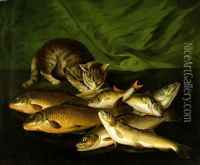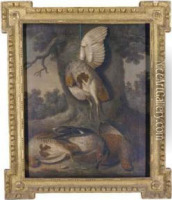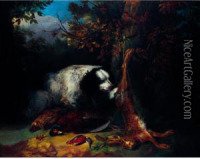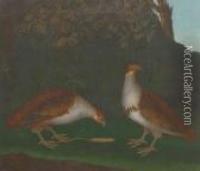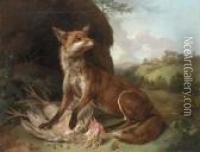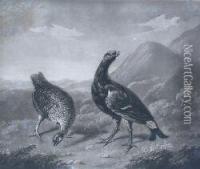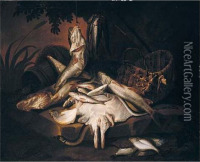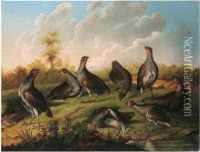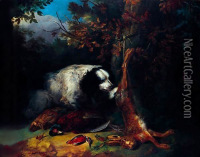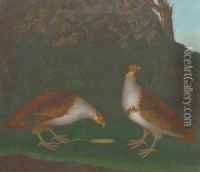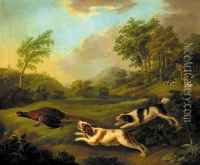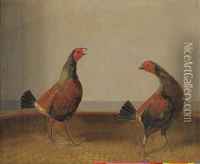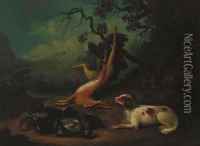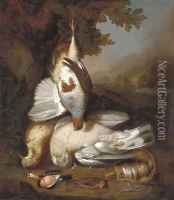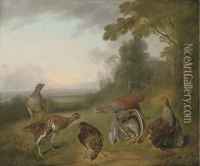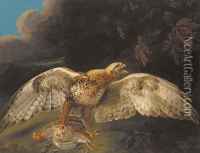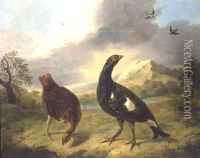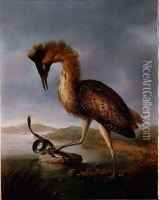Stephen Elmer Paintings
Stephen Elmer was an 18th-century English painter known for his still-life and genre paintings. Born in 1717 in Farnham, Surrey, Elmer was primarily self-taught, although there is some evidence that he may have received some formal training. His early works were influenced by the Dutch still life tradition, which was popular in England at the time.
Elmer's father was a successful market gardener, and this connection to nature and rural life is reflected in his artwork. He painted a variety of subjects, including game pieces, with meticulous attention to detail and a strong sense of naturalism. This focus on depicting game and other food items in a realistic manner often led to his work being categorized as 'market' or 'kitchen' pieces.
In the mid-18th century, Elmer began to gain recognition for his work. He exhibited at the Society of Artists and was elected as a member in 1765. Elmer's paintings appealed to the tastes of the English gentry and middle classes, who appreciated his realistic approach to everyday subjects. His genre scenes often depicted country folk and were characterized by a sense of humor and moral undertones, which was a common theme in English genre painting at the time.
Stephen Elmer's son, William Elmer, also became a painter, although he did not achieve the same level of recognition as his father. Stephen Elmer passed away in 1796 in his hometown of Farnham. His works remain a fine example of English still-life and genre painting from the 18th century, demonstrating a transition from the Baroque influence to a more distinctly British style of art.
